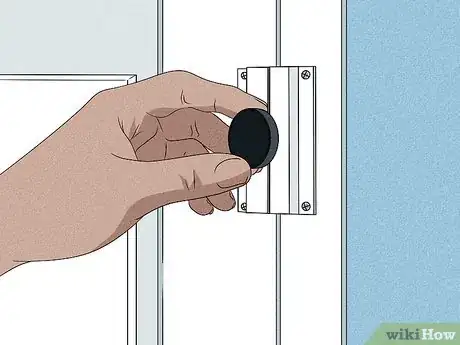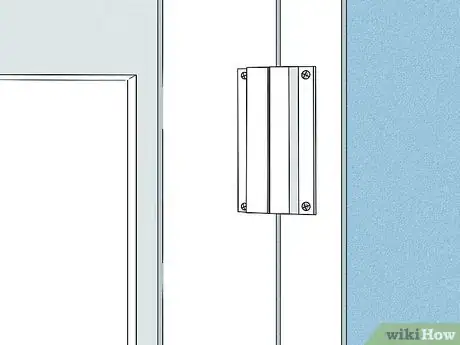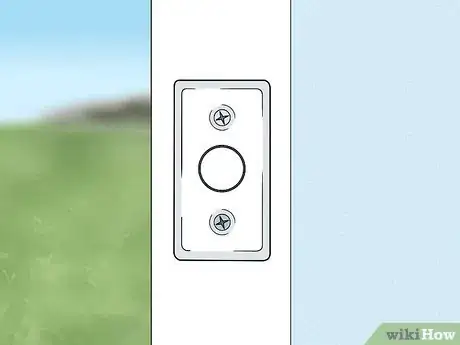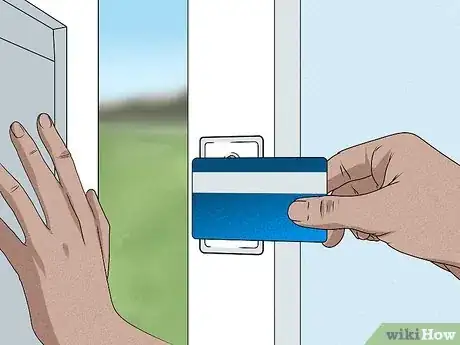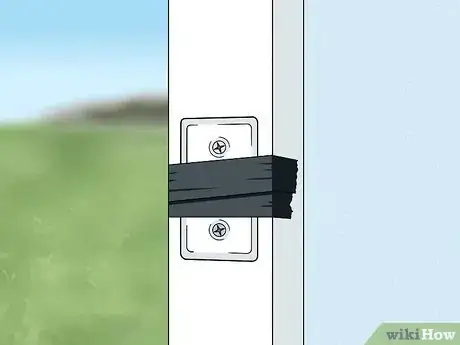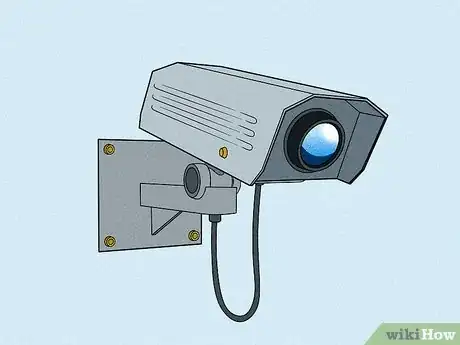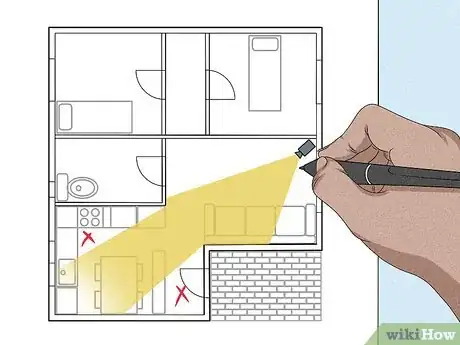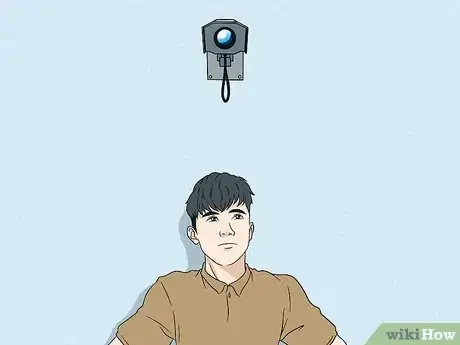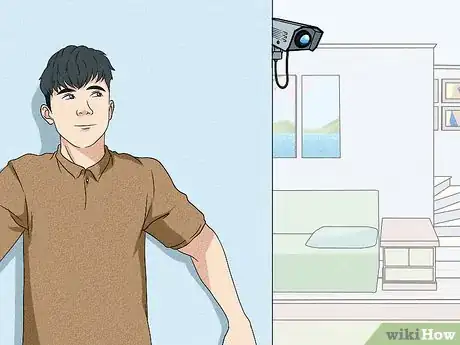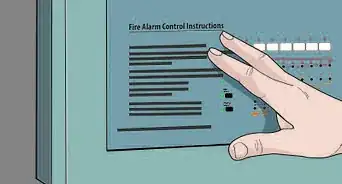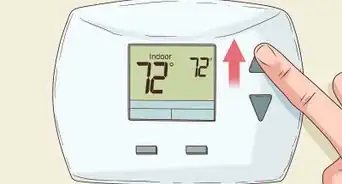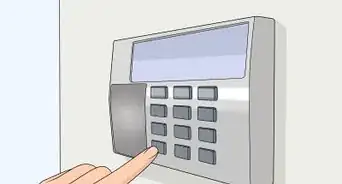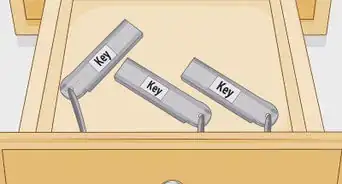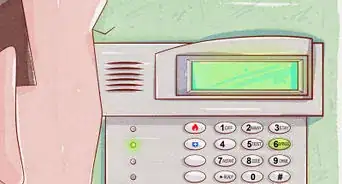This article was co-authored by Saul Jaeger, MS. Saul Jaeger is a Police Officer and Captain of the Mountain View, California Police Department (MVPD). Saul has over 17 years of experience as a patrol officer, field training officer, traffic officer, detective, hostage negotiator, and as the traffic unit’s sergeant and Public Information Officer for the MVPD. At the MVPD, in addition to commanding the Field Operations Division, Saul has also led the Communications Center (dispatch) and the Crisis Negotiation Team. He earned an MS in Emergency Services Management from the California State University, Long Beach in 2008 and a BS in Administration of Justice from the University of Phoenix in 2006. He also earned a Corporate Innovation LEAD Certificate from the Stanford University Graduate School of Business in 2018.
This article has been viewed 275,561 times.
Many homes have security systems to prevent criminals and unauthorized people from entering the house. However, in some cases, you may need to get outside your home without setting off your alarm. Many different alarm systems exist, so each situation will be unique, but for common magnet and button alarm systems, or even camera security, there are ways you can sneak by undetected.
Things You Should Know
- Place a fridge magnet on top of a magnet alarm sensor to trick it. This way, the system will think the window or door is closed, not open.
- Tape a credit card over top of a button alarm to keep it pressed while you sneak out of the house. Remember to remove it when you're done!
- Sneak past camera alarms by staying out of view. Do your best to determine the camera's access and stick close to walls to stay out of sight.
Steps
Magnet Sensors
-
1Identify your ideal escape route. You'll find the magnet sensors of most alarms on the windows and doors of your home. You'll want to choose a door or window that's easy to access and escape through. For windows, you'll also want to consider your path after you exit.
- Second story windows can be difficult to safely get down from without extra tools, like a ladder. Because of this, these windows should be avoided.[1]
- If you plan to leave through a window, your best choice may be one that's ground level and roughly chest height.
-
2Inspect the alarm mechanism to verify it's magnetic. Generally, magnet sensors will look like a small metal box. In some cases, this may have exposed pieces of magnet, which are usually dark in color. The sensor will have two parts. One will be stationary, and the other will be attached to the movable part of your door or window.
- When the magnetic bond between the fixed and movable parts of the sensor is broken, the alarm will be activated.
- Magnet sensors are almost always placed on the frame of the door or window at the top, bottom, or one of the sides.[2]
- Some magnetic sensors cannot be bypassed because they are placed inside the door jamb and the door.
Advertisement -
3Use a magnet to bypass the sensor. You should be careful when attempting this, as some sensors are higher quality than others and this technique may not always work. However, in some cases, you may be able to place a fridge magnet on the sensor to trick it into thinking the door or window is closed even when open.
- For more sophisticated magnet sensors, you may need to use tools, like a screwdriver, to remove the movable part of the sensor on the door or window. Then, place it onto the stationary sensor to make it think the window is still closed.
- Before you remove any parts of the sensor, you might first want to take a picture of it with your cell phone. This way, you'll have a reference photo if you have to put it back together later.
- You may be able to check whether or not your fridge magnet works by applying it to the sensor and running a check on your security system, if that feature is available. If the sensor reads as closed when the fridge magnet is in place and the window open, this technique should work.
-
4Return the door or window to normal. After you come back, you'll want to re-engage your alarm to prevent burglars from using your temporary escape route. To do this, simply return your door or window to the fully closed position and remove the magnet you used to trick the sensor.
- If you removed the movable part of the sensor because your system was more sophisticated, all you have to do is refasten that part into place. If you have difficulty remembering how to reinstall the mechanism, consult the picture you took earlier.
Button Alarms
-
1Determine your exit point. Button alarms, much like magnet alarms, are also common for windows and doors.[3] Choose an exit point that is easily accessible, like one that is free of clutter and opens easily. For windows, you should prioritize those that are chest high, as these will pose less of a risk for falling injuries.
- Falling from a second story window or higher could cause serious injury or death. For this reason, you should avoid windows this high.[4]
-
2Familiarize yourself with the alarm. Push button alarms will oftentimes have a thin, plastic casing that has a button built into it. When a door or window is opened, the button is released and the alarm is activated.
- In many cases, the button will be in the center of its casing and positioned in such a way that when fully closed, the door or the window fully presses it.
- Some button sensors may have a casing that contours itself so that the sides of the casing form a cradle for the door or window. The button for the alarm is often located in the center of this cradle.
-
3Block the button. By placing an object over the button to keep it engaged, you can fool your button alarm into thinking that the window or door is still closed. Depending on your situation, how you do this may vary. In some cases, you might:[5]
- Open the door or window in extremely tiny increments. Once the button is accessible, but still engaged, use a popsicle stick to hold the button down and keep the alarm from sounding.
- Use stiff card stock for sensitive alarms. Even opening your door or window a tiny amount might cause sensitive alarms to sound. Use a thin piece of stiff material, like card stock, and wiggle it between the space between the button and the door or window to hold the button in place.
-
4Fasten your button blocker. To prevent setting off the alarm after you leave, you'll need to fasten your button blocker in place to prevent the alarm from activating. In most cases, you should be able to use a durable tape, like duct tape, to hold your button blocker in place and keep the button pressed.
- Many doors and windows are painted. Be careful when applying tape to these surfaces. Sometimes the tape can damage the paint job when you pull it free.
- For more permanent disabling measures, you may want to glue your button blocker in place. However, doing so will make this point more accessible to burglars as well.
-
5Remove your button blocker when the alarm is disengaged. Your button blocker may be obvious on your window, so you may want to remove it after you're done bypassing your alarm. Since removing your blocker while the alarm is activated may result in you setting it off, you may want to wait until the alarm is turned off before you remove your blocker.
Camera Security System
-
1Scout the environment. Some cameras are stationary, but others move to pan a wide view of a location. You'll have to study the camera to determine the range of its view if you're going if you're going to sneak by it without being seen.
- Some cameras will be oriented at a single important point, like a corner, door, or entrance of a walkway. These may only narrowly focus on that point. Others may focus on a wide/long view, like down a hallway or even the side of a building.
- In many cases, there will be other items in the environment, like boxes, chairs, tables, and so on. You might be able to creep behind these to hide from the camera.
- If you set up a home security system, make it visible.
- Nowadays, cameras are relatively cheap. They are even wireless. You can plug them in.
- You can get a package of Costco and put them up very quickly.
-
2Chart your course. If you've noticed the camera is angled downward, you may be able to pass by undetected by giving it a wide berth. If the camera is pointing in the distance, you may be able to creep close to the wall outside its view. Planning possible routes before attempting to sneak could reveal even better paths for you to take.
- It may help to draw potential routes past the camera on a piece of paper to evaluate your options. Make a simple drawing of the environment, shade the likely area of the camera's vision, and draw lines to represent possible unseen paths you can use.
- Some cameras may have be equipped with wide angle lenses to give a broader view. To account for this, you should make the suspected field of vision for the camera slightly larger than you originally think.
-
3Err on the side of caution when sneaking. You might feel silly flattening yourself against the wall at the base of a camera to inch past it without being seen, but if even a piece of clothing or a limb is caught on film, you could be busted. For this reason, you should always give potential areas of the camera's vision as much cushion space as possible.
- Before sneaking, you may want to imagine the view from the camera's perspective as a final check to see if you've overlooked something.
- When sneaking behind objects, like desks and chairs, try to stay as close to the item as possible. This will cut down the angle of visibility of overhead cameras.
- If sneaking behind objects, like desks and chairs, mind that gaps don't give you away and make yourself as small as possible to prevent a limb or piece of clothing from getting caught on camera.
-
4Return with caution. When coming home, especially after a fun time with friends, it can be easy to forget the camera and pass by it like you might normally. You'll have to creep by the camera in the same fashion you did while leaving for there to be no trace of your passing.
Community Q&A
-
QuestionWhat if the camera covers the full back yard?
 Community AnswerThen try to sneak out of a front window, and walk across the front yard. If your front yard also has cameras, attempt to stay in the shadows of trees or in the shadows of the house, this will keep you unseen. Wear dark clothes just to be on the safe side.
Community AnswerThen try to sneak out of a front window, and walk across the front yard. If your front yard also has cameras, attempt to stay in the shadows of trees or in the shadows of the house, this will keep you unseen. Wear dark clothes just to be on the safe side. -
QuestionWhat should I do if I have dogs?
 Community AnswerIf you have dogs, evaluate the situation and decide the best way to keep your dogs quiet. For instance, if your dogs bark when someone comes inside, then you may want to bring some treats with you to keep the dogs distracted while you sneak to your room.
Community AnswerIf you have dogs, evaluate the situation and decide the best way to keep your dogs quiet. For instance, if your dogs bark when someone comes inside, then you may want to bring some treats with you to keep the dogs distracted while you sneak to your room. -
QuestionCan a burglar locate my door contact with a stud-pop from outside of my home, tape a strong magnet near my door contact, and open the door without setting off the alarm?
 Community AnswerThis is possible, but unlikely given the average intelligence of a burglar. Additionally, they would have to know that you have a magnetic alarm.
Community AnswerThis is possible, but unlikely given the average intelligence of a burglar. Additionally, they would have to know that you have a magnetic alarm.
Warnings
- Make sure you are not violating any laws or agreements by disabling your alarm. If you rent your home, doing so could have ramifications, like a monetary penalty.⧼thumbs_response⧽
References
- ↑ https://www.osha.gov/SLTC/fallprotection/
- ↑ http://www.csoonline.com/article/2133815/physical-security/researchers-show-ways-to-bypass-home-and-office-security-systems.html
- ↑ http://www.csoonline.com/article/2133815/physical-security/researchers-show-ways-to-bypass-home-and-office-security-systems.html
- ↑ https://www.osha.gov/SLTC/fallprotection/
- ↑ https://www.blackhat.com/presentations/bh-europe-08/Deviant_Ollam/Whitepaper/bh-eu-08-deviant_ollam-WP.pdf
About This Article
Sneaking past surveillance cameras in your house can be difficult, but if the camera is angled downward, try to stay as far away from it as possible. Stay close to furniture or walls to avoid being detected. If a camera is pointing into the distance, you might be able to sneak past it by flattening yourself against the wall underneath it. To get past window or door alarms, first figure out if it’s a magnet alarm, which will look like a small metal box, or a button alarm, which will usually have a thin, plastic casing. You can try to bypass a magnet alarm by attaching a fridge magnet to the box and making it think the door is closed while you open it. For a button alarm, slide something between the two halves of the casing and hold it there to block the button. When you open the door, tape over the button so it thinks the door is closed. For more tips, including how to choose the best route out of your house, read on!


